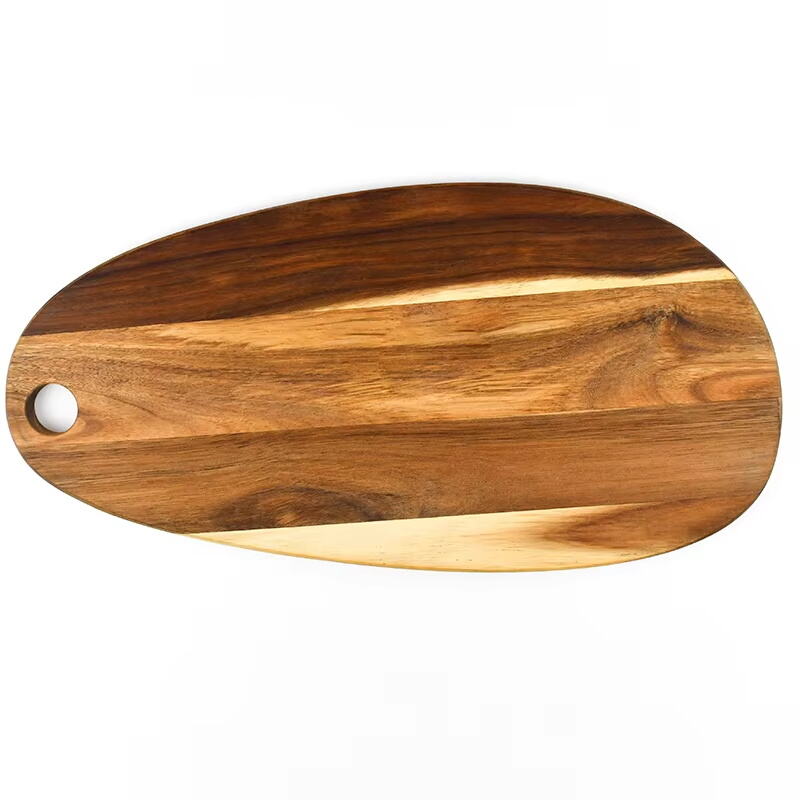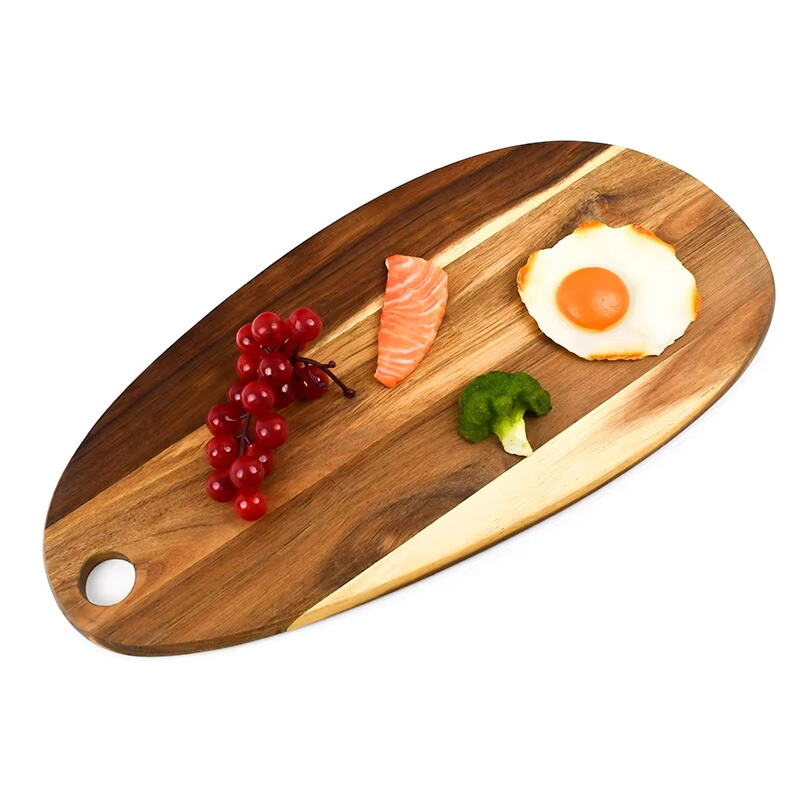The Natural Appeal of Wooden Cutting Boards in Modern Kitchens
In the heart of every well-equipped kitchen lies an essential tool that combines functionality with timeless aesthetics - the wooden chopping board set. As home cooking continues to rise in popularity, more people are discovering the numerous advantages of investing in quality wooden cutting boards. These versatile kitchen companions not only serve as practical food preparation surfaces but also add a touch of warmth and natural beauty to any culinary space.
A wooden chopping board set represents more than just kitchen tools; they're a testament to sustainable craftsmanship and culinary tradition. Whether you're a professional chef or an enthusiastic home cook, understanding the full spectrum of benefits these boards offer can transform your cooking experience and kitchen environment.
Essential Benefits of Wooden Cutting Boards
Superior Durability and Longevity
One of the most compelling reasons to choose a wooden chopping board set is their exceptional durability. Quality wooden boards, when properly maintained, can last for decades, making them a worthy investment for any kitchen. The natural hardness of wood, especially in varieties like maple, oak, or walnut, provides excellent resistance to daily wear and tear.
Unlike plastic alternatives that can warp or develop deep grooves over time, wooden boards maintain their integrity and can even be restored through occasional sanding. This inherent durability means that a well-chosen wooden chopping board set will serve generations of cooks, becoming more characterized with each use while maintaining its functionality.
Natural Antibacterial Properties
Perhaps surprisingly to some, wooden cutting boards possess natural antibacterial properties that make them particularly safe for food preparation. The wood's cellular structure contains compounds that actively inhibit bacterial growth, while its slightly porous surface draws bacteria below where they cannot multiply and eventually die.
Studies have consistently shown that properly maintained wooden chopping board sets harbor fewer bacteria than their plastic counterparts, even after extended use. This natural defense mechanism makes wooden boards an excellent choice for both raw meat preparation and general food handling.

Impact on Food Preparation and Knife Care
Knife-Friendly Surfaces
Professional chefs often prefer wooden chopping board sets because they're inherently gentle on knife edges. The natural give in wood fibers allows knives to maintain their sharpness longer compared to harder surfaces like glass or bamboo. This characteristic not only extends the life of your knives but also makes cutting and chopping more efficient and safer.
The subtle grip that wood provides also prevents dangerous slipping during use, allowing for more precise cuts and enhanced control during food preparation. This combination of knife preservation and improved cutting efficiency makes wooden boards invaluable tools in any serious cook's arsenal.
Enhanced Food Preparation Experience
Working with a wooden chopping board set elevates the entire cooking experience. The boards provide stable, spacious surfaces that accommodate various cutting techniques and food types. Their weight and stability ensure they stay firmly in place during use, while their natural shock absorption makes repetitive chopping less strenuous on the hands and wrists.
Different boards within a set can be designated for specific uses - larger boards for meal prep, medium ones for vegetables, and smaller ones for fruits or garnishes. This organization not only prevents cross-contamination but also streamlines the cooking process.
Aesthetic and Environmental Considerations
Visual Appeal and Versatility
A wooden chopping board set adds undeniable aesthetic value to any kitchen. The natural grain patterns, warm colors, and organic textures of wood create visual interest and can serve as beautiful serving platters for cheese boards, charcuterie, or bread. Each board develops a unique patina over time, telling its own story of countless meals prepared and shared.
Beyond their practical use, wooden boards can be displayed as decorative elements in modern kitchens, adding rustic charm or sophisticated elegance depending on their design and wood type. Their versatility extends from everyday food preparation to elegant entertaining, making them truly multipurpose investments.
Environmental Impact and Sustainability
Choosing a wooden chopping board set represents a commitment to environmental sustainability. Unlike plastic alternatives, wooden boards are biodegradable and often made from renewable resources. Many manufacturers now focus on using wood from certified sustainable forests, ensuring minimal environmental impact.
The longevity of wooden boards also contributes to their eco-friendly nature - a quality set can last decades, reducing the need for frequent replacements and ultimately decreasing waste. When a wooden board eventually reaches the end of its life, it can be composted or repurposed, unlike synthetic materials that may persist in landfills for centuries.
Maintenance and Care Essentials
Daily Care Requirements
Maintaining a wooden chopping board set requires consistent but straightforward care routines. After each use, boards should be hand washed with mild soap and warm water, then dried immediately to prevent warping or cracking. Avoiding soaking the boards or putting them in the dishwasher will significantly extend their lifespan.
Regular application of food-grade mineral oil or board conditioner helps prevent the wood from drying out and maintains its natural resistance to moisture and bacteria. This simple maintenance routine ensures your boards remain beautiful and functional for years to come.
Long-term Preservation Techniques
For long-term care, wooden chopping board sets benefit from occasional deep cleaning and reconditioning. Using coarse salt and lemon to scrub the surface helps remove stubborn stains and odors while maintaining the wood's natural properties. Periodic light sanding can remove surface scratches and restore a smooth cutting surface.
Storing boards properly - standing on edge in a dry, well-ventilated space - prevents warping and allows air circulation. With proper care, each board in your set will continue to serve as both a practical tool and a cherished kitchen companion for many years.
Frequently Asked Questions
How often should I oil my wooden chopping board set?
For optimal maintenance, apply food-grade mineral oil to your wooden chopping boards every 3-4 weeks during regular use. If you notice the wood looking dry or pale, it's time for an additional treatment. New boards may require more frequent oiling in the first few months.
Can I use wooden cutting boards for raw meat?
Yes, wooden cutting boards are safe for raw meat preparation when properly maintained. Their natural antibacterial properties help prevent bacterial growth, but it's essential to clean them thoroughly after use and avoid cross-contamination by designating specific boards for raw meat.
What woods are best for cutting boards?
The most suitable woods for cutting boards include maple, walnut, and beech. These hardwoods offer excellent durability, resist absorption, and are gentle on knife edges. They also possess natural antibacterial properties and are less prone to warping or splitting than softer woods.



 Home
Home